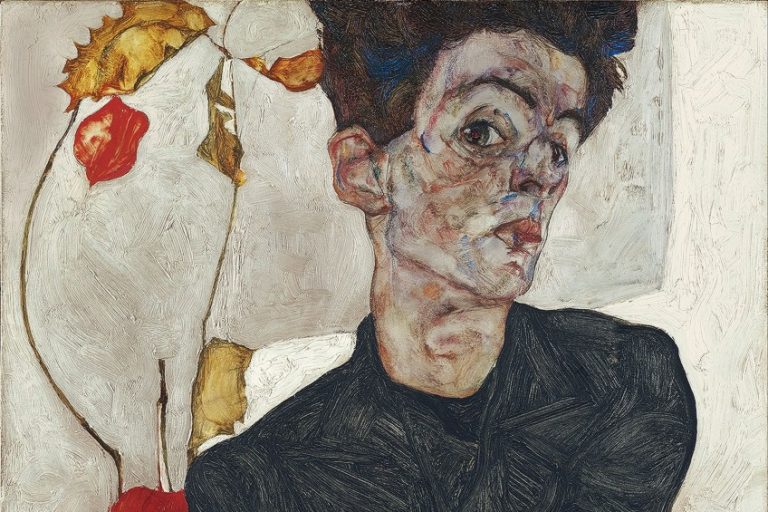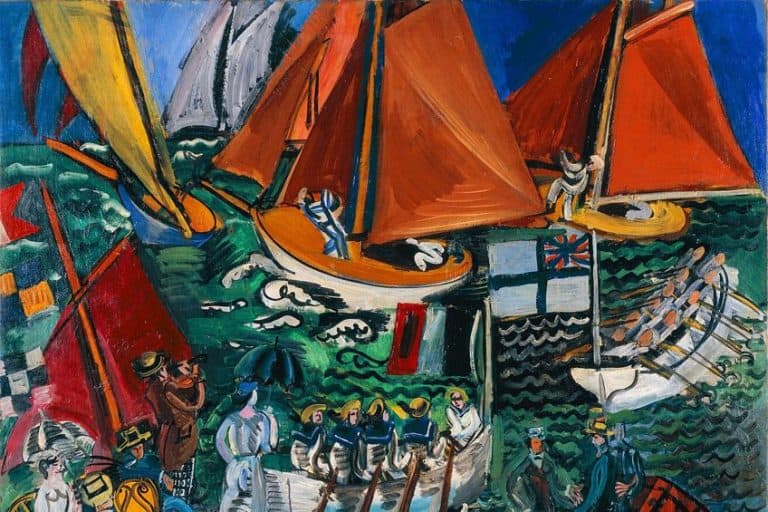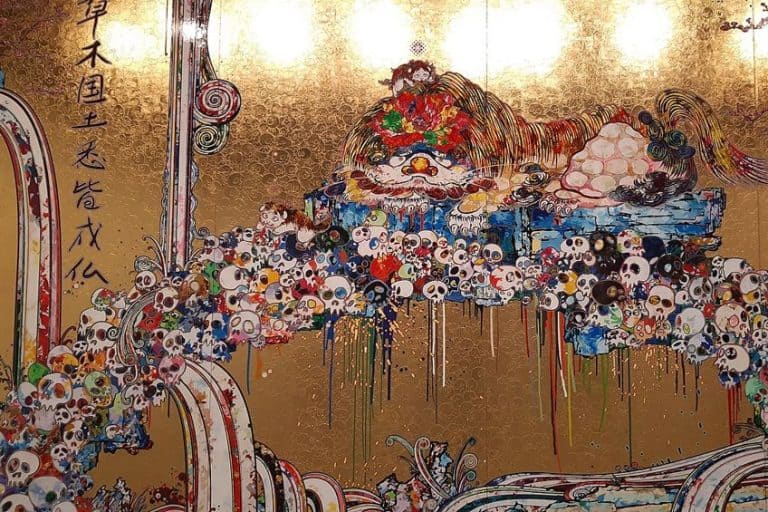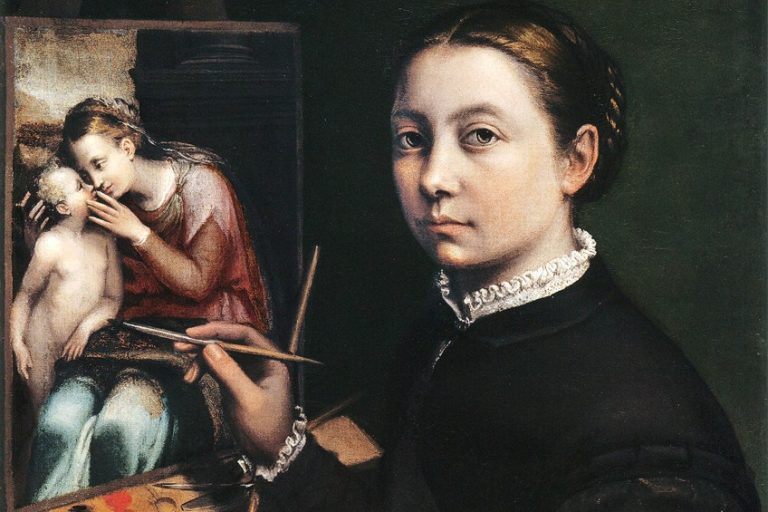Alexander Calder – The Life of the American Sculptor
Discover the fascinating world of art through the lens of Alexander Calder, a visionary artist renowned for his captivating wire sculptures and groundbreaking contributions to the realm of modern art. In this article, we delve into the life and legacy of Alexander Calder, exploring intriguing Alexander Calder facts, Alexander Calder’s artwork, and the profound impact he left on the art world. As one of the pioneering wire sculpture artists, Calder’s innovative approach and masterful creations continue to inspire and captivate audiences worldwide. Join us on this artistic journey as we unravel the brilliance of Alexander Calder’s art and the enduring allure of his artwork.
Artist Abstract: Who Was Alexander Calder?
| Date of Birth | 22 July 1898 |
| Date of Death | 11 November 1976 |
| Place of Birth | Lawnton, Pennsylvania, United States |
| Nationality | American |
| Associated Art Movements | Modern art, Kinetic art, Surrealism, and Section d’Or |
Alexander Calder’s exceptional artistic journey, from his early wire sculptures to his monumental public installations, has left an enduring mark on the art world. His innovative use of materials, keen sense of balance and movement, and exploration of abstract forms have solidified his legacy as one of the greatest wire sculpture artists and a transformative figure in modern art.
Childhood
Alexander Calder, born on July 22, 1898, in Lawnton, Pennsylvania, USA, was destined to become one of the most influential artists of the 20th century. Raised in a family of artists, his father was a sculptor and his mother a painter, Calder’s creative inclinations were nurtured from an early age.
His childhood experiences, growing up surrounded by art and immersed in an artistic environment, would significantly shape his artistic journey.
Influences
Calder’s early exposure to the works of great artists, such as Piet Mondrian (1872 – 1944) and Joan Miró (1893 – 1983), during his frequent visits to Europe, left an indelible mark on his artistic sensibilities. The abstract and geometric principles that Mondrian explored, as well as the whimsical and surreal elements present in Miró’s art, would become crucial influences on Calder’s later creations.

Moreover, his fascination with the circus, acquired from childhood visits to Ringling Brothers and Barnum & Bailey Circus, would later manifest in his famous Cirque Calder, a miniature circus comprised of wire sculptures and moving parts.
Training and Early Artworks
After studying mechanical engineering at Stevens Institute of Technology, Calder pursued a degree in art at the Art Students League of New York in 1923. However, his artistic breakthrough came during a visit to the Paris studio of Piet Mondrian in 1930. Inspired by the Dutch artist’s abstract style, Calder began experimenting with wire sculpture, pioneering a novel art form that would come to define his career.
His early mobiles, propelled by motors and air currents, demonstrated a keen understanding of balance, movement, and space.
Major Career Achievements
Throughout his illustrious career, Alexander Calder achieved numerous milestones. In the early 1930s, he coined the term “mobile” to describe his suspended, kinetic sculptures that gracefully danced with the slightest breeze.

By the 1940s, he shifted his focus to monumental public sculptures, leaving a lasting impact on urban landscapes worldwide. Among his most celebrated works is the large-scale mobile La Grande Vitesse, installed in 1969 in Grand Rapids, Michigan, which established him as a pioneer of public art.
Influence on the Evolution of Art
Alexander Calder had a profound influence on the evolution of art, particularly through his pioneering contributions to kinetic sculpture and the exploration of movement in art. By introducing the concept of “mobiles” and embracing the dynamic qualities of balance and motion, Calder challenged traditional notions of static art and opened new avenues for artistic expression. His innovative approach inspired generations of artists to explore the fusion of art and movement, leading to the emergence and development of the kinetic art movement.
Calder’s lasting impact on the art world continues to resonate, as his groundbreaking ideas and sculptural innovations continue to inspire and shape the trajectory of contemporary art.
Kinetic Art
Alexander Calder’s creative contributions to Kinetic art, emphasizing movement and dynamism, revolutionized the art world and inspired eras of artists to explore the fusion of art and motion. Kinetic art is an artistic movement that emerged in the 20th century, characterized by artworks incorporating movement as a fundamental element. Artists use various techniques and technologies to achieve movement, blurring the boundaries between art and science. Kinetic art ranges from delicate mobiles swaying in the breeze to large-scale installations with intricate moving parts.

Calder pioneered suspended sculptures that respond to air currents. Other notable kinetic artists include Jean Tinguely (1925 – 1991) and Naum Gabo (1890 – 1977). Kinetic art challenges static traditions, engaging viewers in a dynamic and immersive experience that continues to captivate and push the boundaries of artistic expression.
Surrealism
Alexander Calder’s affiliation with the Surrealist movement, along with his friendships with artists like Joan Miró and Marcel Duchamp (1887 – 1968), enriched his artistic perspective and opened new avenues of exploration. Surrealism, an artistic and literary movement that emerged in the early 20th century, sought to delve into the realm of the unconscious mind, dreams, and irrational human experience. Surrealist artists aimed to break free from reason and logic, creating visually striking and thought-provoking works that defied traditional notions of reality.

This movement encompassed various artistic mediums and encouraged artists to tap into the subconscious to express the depths of human imagination. Surrealism’s profound impact extended beyond the art world, influencing literature, cinema, and even political and social thought. It remains an enduring and influential movement, inspiring artists and captivating audiences with its enigmatic and imaginative creations.
Section d’Or
Section d’Or, also known as the Golden Section or Puteaux Group, was an influential collective of avant-garde artists founded in the early 20th century by Jean Metzinger (1883 – 1956) and Albert Gleizes (1881 – 1953), among others. Associated with the Cubist movement, Section d’Or aimed to break away from traditional representation and explore geometric abstraction and color theory. The group sought to develop a systematic approach to artistic representation, emphasizing the interplay of colors and forms by breaking down objects into geometric components.
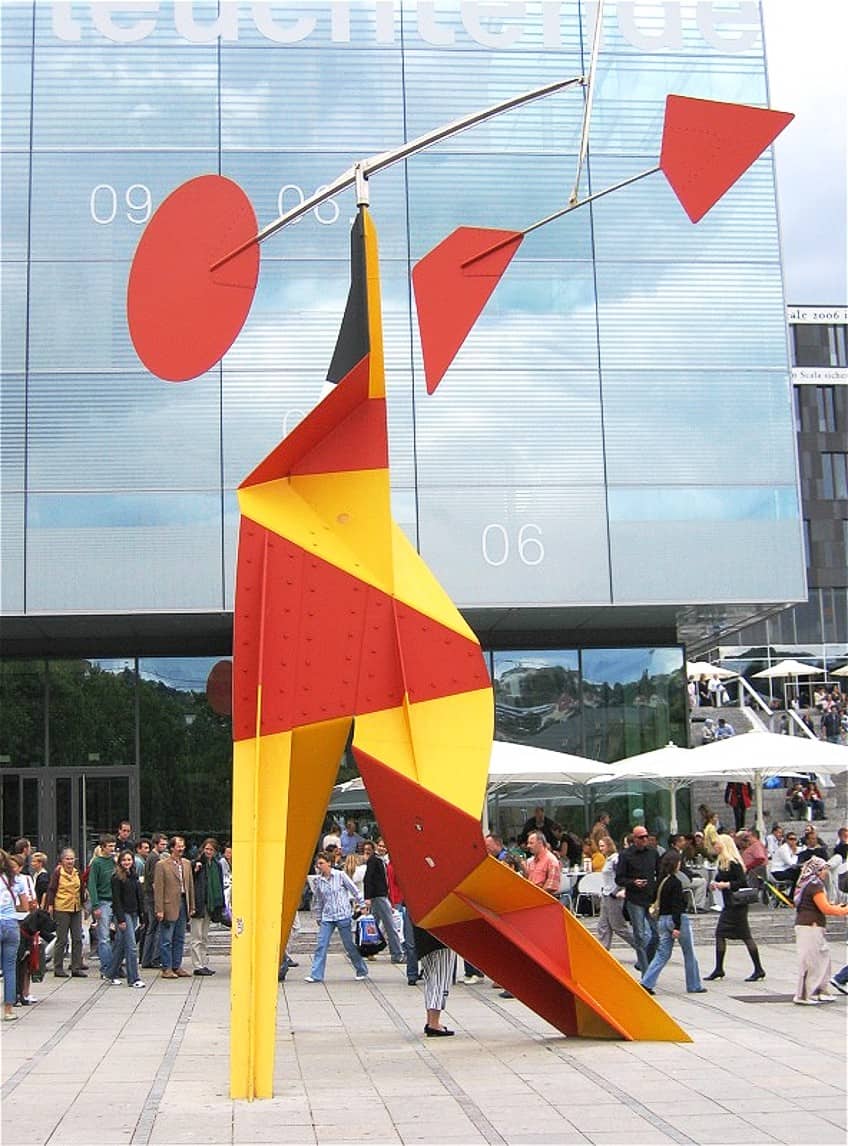
Despite disbanding during World War I, Section d’Or’s ideas left a lasting impact, contributing significantly to the development of abstract art and inspiring subsequent modern art movements. Alexander Calder’s involvement with Section d’Or played a vital role in shaping his abstract language, as the group’s exploration resonated deeply with him, influencing the development of his distinct artistic style.
Alexander Calder’s Artworks in the American Socio-Political Landscape
Beyond his artistic brilliance, Calder’s work was also deeply influenced by the socio-political climate in which he created. In this section of the article, we delve into the context surrounding Calder’s art, exploring how his creations mirrored and responded to the evolving American society during his prolific career.
The Great Depression and Art for the People
Calder’s artistic journey began during the Great Depression, a period marked by economic turmoil and widespread unemployment. In this climate, Calder embraced a democratic approach to art, seeking to create works that were accessible and relatable to the general public.
His mobiles and abstract sculptures, with their playful and whimsical appeal, offered a welcome respite from the hardships of the era, providing a sense of wonder and hope to a struggling nation.
Wartime Tensions and Mobilization of Art
As World War II loomed, Calder’s art took on a new dimension. He was deeply affected by the geopolitical tensions and the rise of fascism in Europe. During the war years, Calder turned his focus to large-scale sculptures, including public commissions. These monumental artworks served as expressions of unity, strength, and resilience, symbolizing America’s determination to confront global challenges and support its allies.
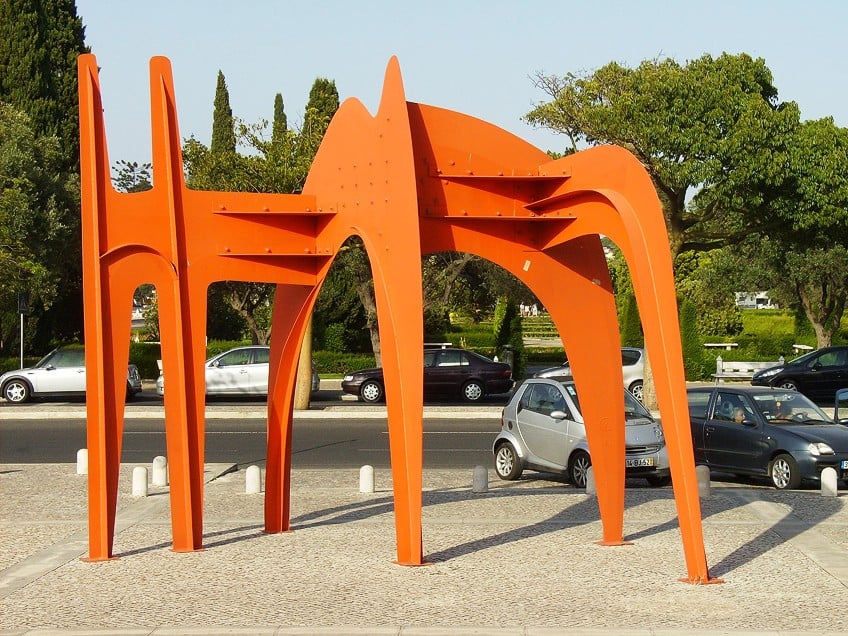
The Cold War and the Space Race
The post-war era witnessed the rise of the Cold War, as tensions escalated between the United States and the Soviet Union. During this time, Calder’s art began to explore themes related to space and the cosmos, reflecting his fascination with space exploration and the burgeoning Space Race.
His mobiles, with their weightless and ethereal quality, embodied the spirit of scientific advancement and the quest for new frontiers.
Civil Rights Movement and Social Change
In the 1950s and 1960s, America experienced a significant period of social change, as the Civil Rights Movement sought to dismantle racial segregation and fight for equality. Calder’s art, too, underwent a shift, reflecting a greater emphasis on social consciousness. He created sculptures that embodied the idea of interconnectedness and harmony, expressing a vision of unity and equality in a divided world.
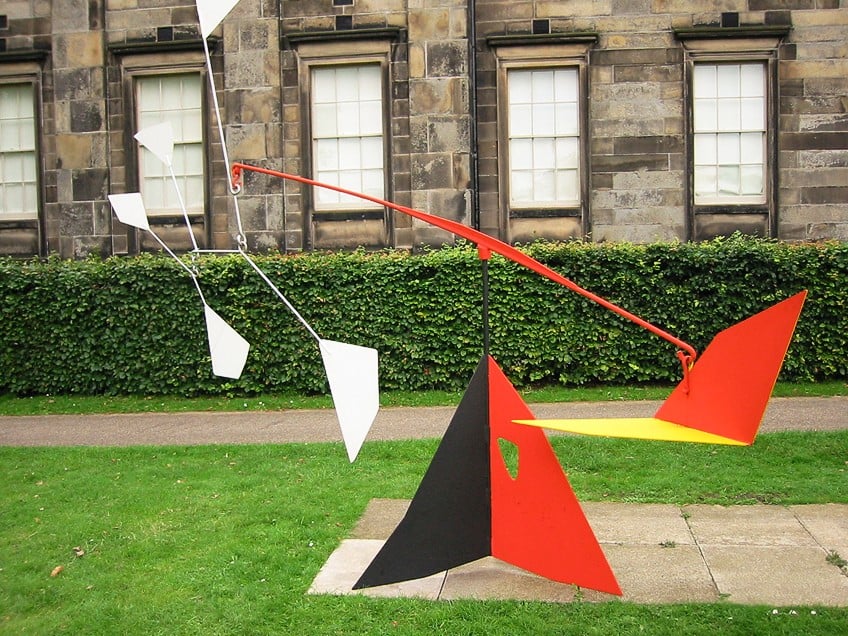
Counterculture and the Artistic Avant-Garde
As the 1960s unfolded, America experienced a countercultural movement, challenging established norms and advocating for social and political reforms. Calder’s art, with its unconventional approach to form and movement, resonated with the ethos of the artistic avant-garde.
His interactive installations and participatory sculptures encouraged viewers to engage with the artwork actively, aligning with the spirit of individual expression and artistic freedom.
Alexander Calder’s Artworks: The Famous Wire Sculpture Artist
Alexander Calder’s art is distinguished by its unique and innovative technical characteristics. Central to his creative genius is his pioneering use of wire as a primary medium, allowing him to craft intricate and delicate sculptures with remarkable fluidity and grace. Through his masterful manipulation of wire, Calder achieved a sense of dynamic movement and balance in his artworks, which became his signature style.
His sculptures often feature suspended elements that respond to the slightest air currents, creating mesmerizing mobiles that seem to dance and float in space.
Additionally, Calder’s ingenious incorporation of mechanical elements and motors in his later works added an interactive dimension to his art, inviting viewers to engage directly with his creations. Alongside his wire sculptures, Calder also demonstrated his technical prowess in creating huge outdoor sculptures, often composed of massive abstract forms that exude a sense of grandeur and harmony with their surroundings.
Visual and Conceptual Analysis of Cirque Calder (1931)
| Title | Cirque Calder |
| Date | 1931 |
| Medium | Wire |
| Dimensions (cm) | 137.2 x 239.4 x 239.4 |
| Art Movement | Kinetic Art |
| Location | Whitney Museum of American Art, New York City, United States |
Cirque Calder (1931) stands as a testament to Alexander Calder’s ingenuity and artistic brilliance. Through his detailed wire sculptures, he creates a captivating miniature circus world that goes beyond mere aesthetics, delving into the deeper realms of human experience and the transformative power of art. Cirque Calder remains an enduring and cherished artwork, a testament to Calder’s ability to infuse life and motion into seemingly static materials, leaving viewers spellbound and transported to a world where the magic of the circus and the wonders of art intertwine.
Visual Analysis
Cirque Calder, created in 1931, is a captivating and whimsical assemblage of wire sculptures, depicting a miniature circus world brought to life by the artist’s inventive hand. The artwork consists of a meticulously crafted mobile circus, featuring acrobats, animals, and circus performers, all delicately suspended from a simple frame.
The wire sculptures are dynamic and playful, with figures caught mid-action, frozen in gravity-defying poses.
Each character exudes a sense of grace and lightness, with Calder’s masterful manipulation of the wire creating an illusion of movement and vitality. The circus performers, dressed in bright and vibrant colors, convey a sense of joy and festivity, inviting viewers into this enchanting world of imagination.
Conceptual Analysis
Cirque Calder is a testament to Alexander Calder’s boundless creativity and inventive spirit. Beyond its visual charm, the artwork embodies deeper layers of meaning and conceptual richness. The miniature circus becomes a metaphor for the broader human experience, capturing the essence of life’s fleeting moments and the delicate balance between stillness and motion. Calder’s fascination with the circus, acquired from his childhood visits to Ringling Brothers and Barnum & Bailey Circus, finds expression in this artwork as he pays homage to the performers’ skill, dedication, and artistry.
Moreover, Cirque Calder represents a celebration of art for art’s sake, free from the constraints of practical utility or conventional artistic norms. The mobile circus is a manifestation of Calder’s desire to create joy and wonder in the hearts of viewers, offering an escape from the realities of the world and an invitation to immerse oneself in a world of imagination and play.
In conclusion, Alexander Calder’s impact on the art world is undeniable and multifaceted. Through a keen exploration of motion, balance, and form, he revolutionized modern art, cementing his legacy as one of the most influential wire sculpture artists in history. From his early fascination with circus performances to his innovative mobiles and monumental sculptures, Calder’s art continues to captivate audiences worldwide. The fusion of imagination and technical skill evident in his artwork has inspired generations of artists, leaving an enduring mark on the trajectory of contemporary art. As we delve into Alexander Calder’s facts and his vast body of work, we find an artist whose creativity knew no bounds, forever altering the course of art history through his groundbreaking contributions to the world of art.
Frequently Asked Questions
What Are Some Interesting Alexander Calder Facts?
Alexander Calder, a visionary artist known for his pioneering contributions to modern art, left behind a legacy rich with fascinating facts. Renowned for his playful and innovative approach, Calder often used unconventional materials in his art, such as sheet metal and found objects, leading him to be a top figure in the development of kinetic art. His monumental public sculptures can be seen gracing cityscapes across the globe, leaving a lasting impact on urban landscapes. An influential member of the Surrealist movement, Calder’s friendships with artists like Joan Miró and Marcel Duchamp further enriched his artistic perspective. Even today, his mesmerizing artwork continues to inspire and captivate audiences, solidifying his place as a true luminary in the world of modern art.
What Was Alexander Calder Best Known For?
Alexander Calder was best known for his pioneering work in creating kinetic sculptures, particularly his innovative use of wire to craft dynamic and graceful mobiles. He coined the term mobile to describe his suspended sculptures that respond to air currents, giving the illusion of movement and balance. Calder’s mobiles became iconic, capturing the essence of motion and the beauty of form in a harmonious dance with the surrounding space. His groundbreaking contributions to the realm of kinetic art solidified his legacy as one of the foremost artists in the exploration of movement and its integration into artistic expression.
How Was Calder Introduced to Art?
Alexander Calder was introduced to art at a young age, as he was born into a family of artists. His father was a sculptor, and his mother was a painter. Growing up in this creative environment provided Calder with a nurturing foundation for his artistic inclinations. As he pursued his education, he attended the Art Students League of New York in 1923, where he honed his artistic skills and began his formal training in art. However, it was a pivotal visit to the Paris studio of abstract artist Piet Mondrian (1872 – 1944) in 1930 that sparked a transformative shift in Calder’s artistic trajectory. Mondrian’s abstract style and exploration of geometric principles deeply influenced Calder, leading him to experiment with wire sculpture and eventually creating his iconic mobiles, which catapulted him into the forefront of the art world.
Nicolene Burger is a South African multi-media artist, working primarily in oil paint and performance art. She received her BA (Visual Arts) from Stellenbosch University in 2017. In 2018, Burger showed in Masan, South Korea as part of the Rhizome Artist Residency. She was selected to take part in the 2019 ICA Live Art Workshop, receiving training from art experts all around the world. In 2019 Burger opened her first solo exhibition of paintings titled, Painted Mantras, at GUS Gallery and facilitated a group collaboration project titled, Take Flight, selected to be part of Infecting the City Live Art Festival. At the moment, Nicolene is completing a practice-based master’s degree in Theatre and Performance at the University of Cape Town.
In 2020, Nicolene created a series of ZOOM performances with Lumkile Mzayiya called, Evoked?. These performances led her to create exclusive performances from her home in 2021 to accommodate the mid-pandemic audience. She also started focusing more on the sustainability of creative practices in the last 3 years and now offers creative coaching sessions to artists of all kinds. By sharing what she has learned from a 10-year practice, Burger hopes to relay more directly the sense of vulnerability with which she makes art and the core belief to her practice: Art is an immensely important and powerful bridge of communication that can offer understanding, healing and connection.
Nicolene writes our blog posts on art history with an emphasis on renowned artists and contemporary art. She also writes in the field of art industry. Her extensive artistic background and her studies in Fine and Studio Arts contribute to her expertise in the field.
Learn more about Nicolene Burger and the Art in Context Team.
Cite this Article
Nicolene, Burger, “Alexander Calder – The Life of the American Sculptor.” Art in Context. August 14, 2023. URL: https://artincontext.org/alexander-calder/
Burger, N. (2023, 14 August). Alexander Calder – The Life of the American Sculptor. Art in Context. https://artincontext.org/alexander-calder/
Burger, Nicolene. “Alexander Calder – The Life of the American Sculptor.” Art in Context, August 14, 2023. https://artincontext.org/alexander-calder/.




